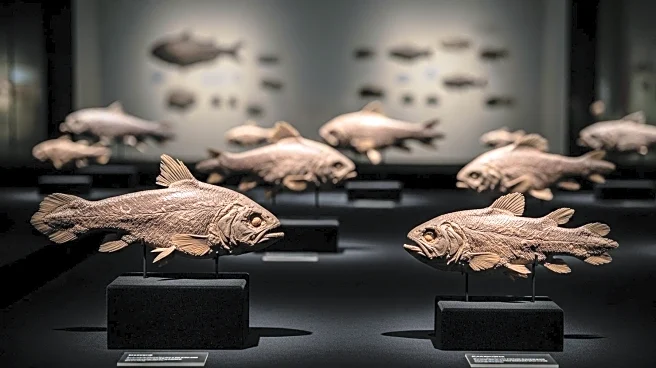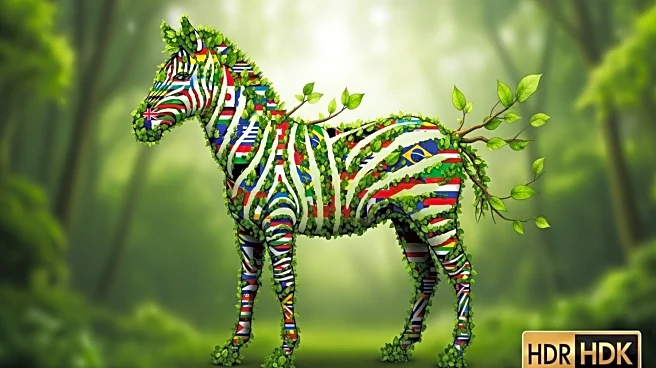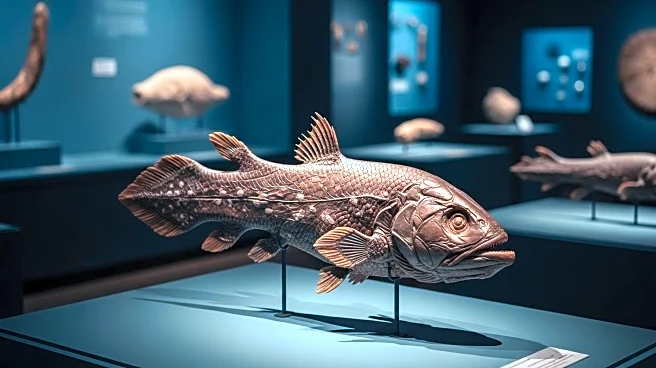What is the story about?
What's Happening?
A recent study published in the Journal of Vertebrate Paleontology has revealed the identification of multiple new species of coelacanths, a type of 'living fossil' fish, in museum collections. These specimens, previously misidentified as bones of other animals, date back to the end of the Triassic Period, approximately 200 million years ago. Jacob Quinn, a researcher from the University of Bristol, discovered that many fossils previously attributed to the marine reptile Pachystropheus were actually coelacanths. This discovery was made through extensive examination of museum collections across the UK, where these specimens had been stored or displayed since the late 1800s. The study highlights the presence of over 50 coelacanth specimens from the British Triassic, significantly increasing the known fossil record of these ancient fish.
Why It's Important?
The discovery of these coelacanth fossils is significant as it reshapes the understanding of vertebrate evolution and the historical biodiversity of marine life. Coelacanths are considered 'living fossils' due to their ancient lineage and minimal evolutionary change over millions of years. This finding provides new insights into the ecological dynamics of the Triassic period, suggesting a complex marine community. The research underscores the importance of revisiting and re-evaluating historical museum collections, which can lead to groundbreaking discoveries and enhance scientific knowledge. It also highlights the potential for misidentification in paleontological studies, emphasizing the need for meticulous examination and advanced techniques like X-ray scanning.
What's Next?
The study opens avenues for further research into the evolutionary history of coelacanths and their ecological roles during the Triassic period. Researchers may continue to explore other museum collections worldwide to identify additional specimens that have been overlooked or misclassified. This could lead to a more comprehensive understanding of the distribution and diversity of coelacanths and other ancient marine species. Additionally, the findings may prompt museums to reassess their collections, potentially uncovering more hidden treasures that could contribute to the field of paleontology.
AI Generated Content
Do you find this article useful?














